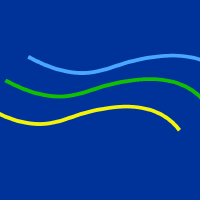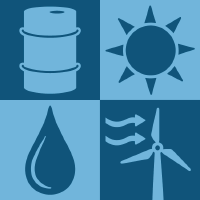Topic Editors
Recent Advances in Diagenesis and Reservoir 3D Modeling
Topic Information
Dear Colleagues,
Reservoir research plays a crucial role in sustainable development by enhancing our understanding of subsurface resources, improving resource management, and minimizing environmental impacts. By optimizing extraction techniques, reservoir research helps to maximize the efficiency of resource use, reduce waste, and lower carbon emissions. Additionally, reservoirs are a focal point of research in petroleum exploration and development, serving as the primary targets for hydrocarbon exploration and production. Understanding reservoir characteristics, including diagenesis evolution, three-dimensional (3D) modeling, and the influence of overpressure on reservoir evolution, is crucial for efficient resource assessment and development.
For in-depth exploration of reservoir diagenesis evolution processes, it is crucial to understand the mechanisms through which geological conditions influence reservoir pore structure, permeability, and fluid migration. This journal Topic focuses on the latest research developments in petroleum reservoir diagenesis evolution, 3D modeling, and overpressure. Various numerical simulation methods can be discussed to simulate reservoir diagenesis processes across micro to macro scales, thereby analyzing the effects of different diagenetic fluids on reservoir properties. Reservoir 3D modeling is a critical aspect of petroleum exploration and development. This special topic focuses on various advanced 3D modeling techniques, including sedimentary facies modeling, lithofacies modeling, and reservoir property modeling. Challenges and difficulties in reservoir 3D modeling can also be addressed. Additionally, this Topic focuses on reservoir overpressure issues, such as the effects of overpressure on reservoir properties, as well as the formation mechanisms and identification methods of overpressure.
Topics of interest include, but are not limited to, the following:
- Mechanisms and influencing factors of reservoir diagenesis evolution.
- Numerical simulation methods and techniques for reservoir diagenesis processes.
- Advanced techniques, applications, and challenges of reservoir 3D modeling.
- Formation mechanisms and identification methods of overpressure and the impacts of overpressure on reservoir evolution.
Prof. Dr. Liqiang Zhang
Dr. Yiming Yan
Dr. Chao Li
Dr. Tingbin Sun
Dr. Binfeng Cao
Dr. Xingru Wu
Topic Editors
Keywords
- mechanical diagenesis
- chemical diagenesis
- diagenesis evolution
- mehcanisms of diagenesis
- influence factors of diagenesis
- diagenesis simulation methods
- reservoir 3D modeling
- machine and deep learning
- geostatistical modeling
- overpressure and its impacts of overpressure on reservoir quality
Participating Journals
| Journal Name | Impact Factor | CiteScore | Launched Year | First Decision (median) | APC | |
|---|---|---|---|---|---|---|

Geosciences
|
2.4 | 5.3 | 2011 | 23.5 Days | CHF 1800 | Submit |

Minerals
|
2.2 | 4.1 | 2011 | 18 Days | CHF 2400 | Submit |

Resources
|
3.6 | 7.2 | 2012 | 26.1 Days | CHF 1600 | Submit |

Sustainability
|
3.3 | 6.8 | 2009 | 19.7 Days | CHF 2400 | Submit |

Preprints.org is a multidisciplinary platform offering a preprint service designed to facilitate the early sharing of your research. It supports and empowers your research journey from the very beginning.
MDPI Topics is collaborating with Preprints.org and has established a direct connection between MDPI journals and the platform. Authors are encouraged to take advantage of this opportunity by posting their preprints at Preprints.org prior to publication:
- Share your research immediately: disseminate your ideas prior to publication and establish priority for your work.
- Safeguard your intellectual contribution: Protect your ideas with a time-stamped preprint that serves as proof of your research timeline.
- Boost visibility and impact: Increase the reach and influence of your research by making it accessible to a global audience.
- Gain early feedback: Receive valuable input and insights from peers before submitting to a journal.
- Ensure broad indexing: Web of Science (Preprint Citation Index), Google Scholar, Crossref, SHARE, PrePubMed, Scilit and Europe PMC.







